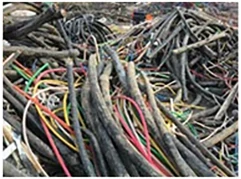

nov . 17, 2024 06:58 Back to list
Non-Ferrous Metal Separation Techniques and Importance
Non-ferrous metals are metals that do not contain significant amounts of iron. This category includes valuable metals such as copper, aluminum, lead, nickel, and zinc, which are widely used across various industries, including construction, automotive, electronics, and packaging. As the demand for these metals continues to grow, the need for effective separation techniques to recover them from waste and recycling materials has become increasingly important. This article explores the significance of non-ferrous metal separation, the various methods employed, and the associated benefits.
The Importance of Non-Ferrous Metal Separation
The separation of non-ferrous metals from other materials is crucial for several reasons. Firstly, the mining of these metals has significant environmental impacts, including habitat destruction and pollution. By recycling non-ferrous metals, we can reduce the need for new mining operations, thereby conserving natural resources and minimizing environmental damage.
Secondly, non-ferrous metals are finite resources that can be depleted over time. Recycling helps to maintain a sustainable supply, ensuring that industries can continue to operate while reducing the overall carbon footprint associated with metal production. For instance, recycling aluminum saves up to 95% of the energy required to produce new aluminum from ore.
Lastly, many non-ferrous metals have considerable economic value. Effective separation and recovery methods can significantly enhance the profitability of recycling operations. The global market for recycled non-ferrous metals is robust, influenced by rising industrial demand and increasing awareness of sustainability among consumers and businesses alike.
Techniques for Non-Ferrous Metal Separation

Various techniques are employed for the separation of non-ferrous metals, each with its advantages and limitations. Below are some of the most commonly used methods
1. Mechanical Separation This involves the use of physical processes to separate non-ferrous metals from other materials. Common mechanical techniques include shredding, air classification, and magnetic separation. Shredding breaks down larger items into smaller pieces, while air classification uses air flow to separate lighter materials from heavier metals. Magnetic separation is effective for removing ferrous metals but can be adapted for non-ferrous metals with the right equipment.
2. Eddy Current Separation This technique is particularly effective for separating non-ferrous metals from non-metallic materials. It works by using an eddy current electromagnetic field to induce currents in conductive metals, which generates a repulsive force that causes them to be ejected from the conveyor system. Eddy current separators are highly efficient and are widely used in recycling facilities to reclaim metals from shredded scrap.
3. Hydrometallurgical Processes These processes involve the use of aqueous solutions to extract metals from ores or scrap. Techniques such as leaching can effectively recover metals like copper and nickel from complex materials. This method can selectively dissolve targeted non-ferrous metals while leaving behind impurities and other materials. Although it requires careful control of chemical reactions and conditions, it can yield high purity metals.
4. Pyrometallurgical Processes These involve high-temperature processing to extract metals from ores or concentrates. Smelting and refining are common pyrometallurgical methods that can produce high-grade metals. While effective, these processes can be energy-intensive and may emit harmful gases, necessitating advanced emission control technologies.
Conclusion
Non-ferrous metal separation is of paramount importance in today's resource-driven world. It not only promotes environmental sustainability through recycling but also supports economic growth by harnessing valuable materials. With advancements in technology, the efficiency and effectiveness of separation methods continue to improve, allowing for higher recovery rates of non-ferrous metals. As industries strive to meet sustainability targets and reduce waste, investing in advanced separation technologies and processes will be crucial. Promoting responsible metal use and recovery is essential for forging a sustainable future while ensuring that the demand for non-ferrous metals is met in an environmentally conscious manner.
Latest news
Troubleshooting Common Eddy Separator Problems
NewsJul.04,2025
The Role of Metal Recycling Plants in Circular Economy
NewsJul.04,2025
The Impact of Recycling Line Pickers on Waste Management Costs
NewsJul.04,2025
Safety Features Every Metal Shredder Should Have
NewsJul.04,2025
How Industrial Shredders Improve Waste Management Systems
NewsJul.04,2025
How Cable Granulators Contribute to Sustainable Recycling
NewsJul.04,2025